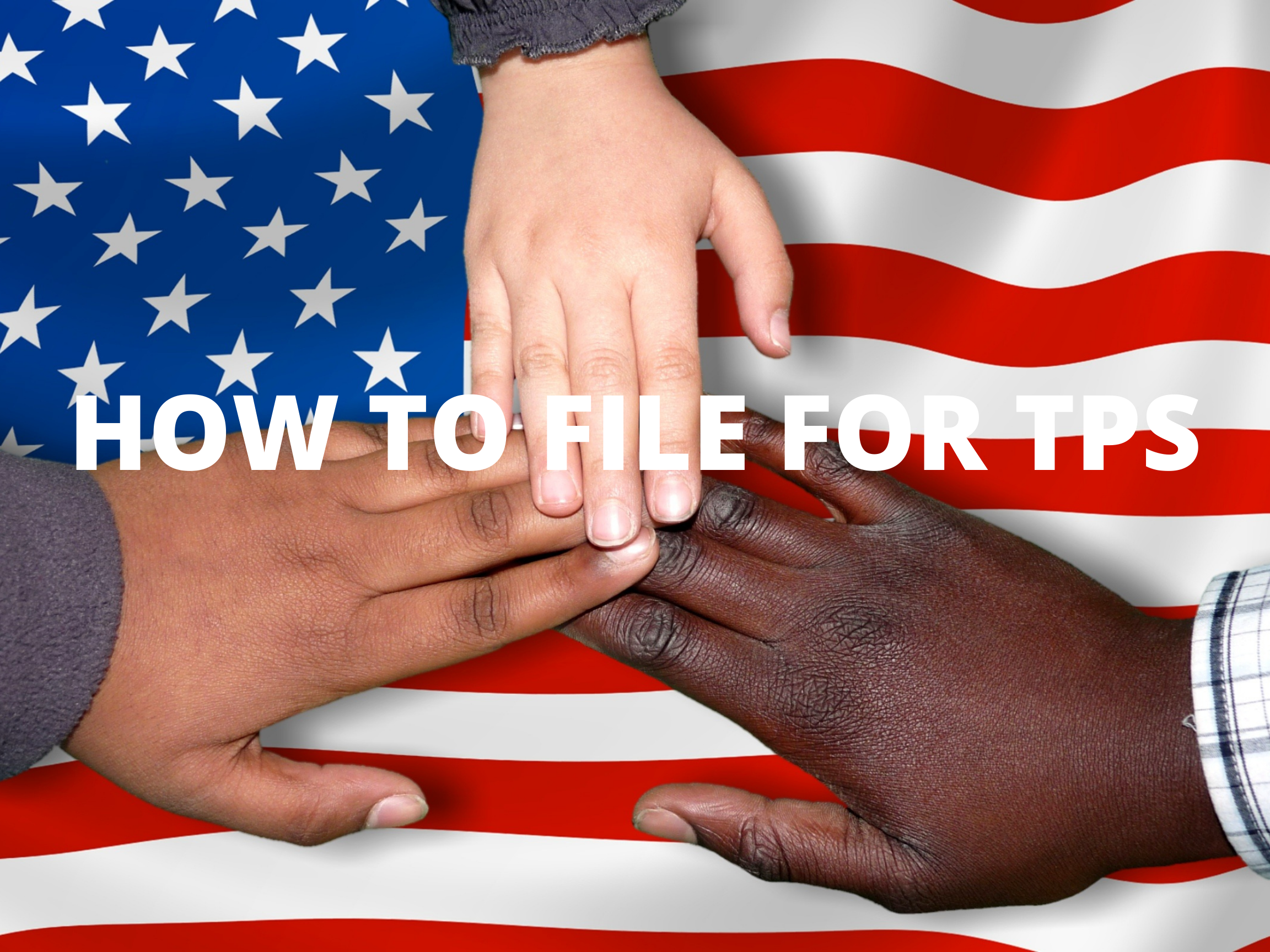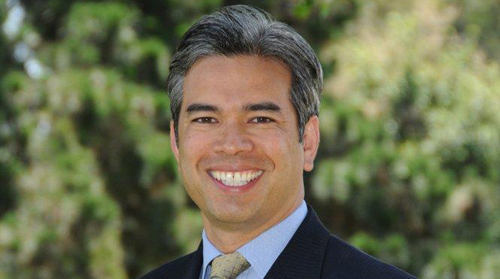If you are an eligible national of a designated country or a person without nationality who last habitually resided in the designated country, use this form to apply for Temporary Protected Status (TPS). When filing an initial TPS application or re-registering for TPS, you can also request an Employment Authorization Document (EAD) by submitting a completed Form I-765, Request for Employment Authorization, when you file Form I-821.
You may also file your Form I-765 request separately at a later date.
Temporary Protected Status (TPS)- Questions and Answers
General Questions
Q1. What are the expected processing times for Form I-821, Form I-765 and Form I-131? A1. Processing times vary depending on how complicated a case is. However, the approximate times below generally apply:
|
If you are filing… |
The approximate processing time might be… |
- An initial Form I-821, Application for Temporary Protected Status——– 6 months
- Form I-765, Application for Employment Authorization———————-3 months
- Form I-131, Application for Travel Document———————————–6 months
Again, these are approximate times. For more information on processing times, visit USCIS’ Check Case Processing Times webpage.
Q2. What proof of my TPS status will I receive?
A2. If USCIS approves your initial TPS application, we will send you an approval notice with an I-94, Arrival/Departure Record, which is evidence of your TPS. If you filed Form I-765, Application for Employment Authorization, and you did not receive an EAD before this step, we will also send you an EAD. For more information on the TPS application process, visit USCIS’ TPS webpage. (See the section Application Process.)
Q3. May people in immigration detention apply for TPS?
A3. USCIS may consider TPS applications from individuals who are currently in immigration detention. If you are in removal proceedings at the time of your country’s TPS designation, you may submit an application to USCIS. If you are in removal proceedings, and the basis of the Notice to Appear (NTA) is a mandatory ground for TPS ineligibility, the Department of Justice’s Executive Office for Immigration Review will have jurisdiction to adjudicate your TPS application. See 8 C.F.R. 244.7(d).
Q4. When a family is applying for TPS, do you recommend that every family member apply simultaneously?
A4. TPS is an individual benefit, and family members cannot derive TPS because their spouse or parent receives TPS. Family members may each apply for TPS on their own individual applications either simultaneously or at different time, but each individual must meet the eligibility criteria for TPS independently. USCIS encourages each family member to file their own application with a separate payment.
Q5. If I am subject to certain grounds of inadmissibility that may be waived, am I required to submit a Form I-601 waiver application with the Form I-821, or can I submit it at a later date?
A5. You may submit Form I-601, Application for Waiver of Grounds of Inadmissibility, with your initial TPS package; however, USCIS will give you the opportunity to submit this form later if you do not submit it with your initial package. For more information, visit USCIS’ TPS webpage.
Q6. If I am out-of-status or entered the United States illegally, am I still entitled to apply for TPS?
A6. Yes, if you are out of status or entered the United States without being inspected and admitted you may apply for TPS. To be approved for TPS, you must meet all eligibility requirements.
Q7. Does TPS take effect on the date USCIS approves the application or the date USCIS receives it?
A7. TPS takes effect on the date USCIS approves Form I-821, Application for Temporary Protected Status. For more information on the application process, please see the Application Process section on USCIS’ TPS webpage.
Q8. What is the difference between continuous residence and continuous physical presence?
A8. To qualify for Temporary Protected Status, an applicant must show both continuous residence and continuous physical presence in the United States from certain dates that are determined by the Secretary of Homeland Security and specified in the Federal Register notice regarding the country’s TPS designation.
The regulations at 8 CFR 244.1(3) define the terms as follows:
Continuously physically present means actual physical presence in the United States for the entire period specified in the regulations. An alien shall not be considered to have failed to maintain continuous physical presence in the United States by virtue of brief, casual, and innocent absences as defined within this section.
Continuously resided means residing in the United States for the entire period specified in the regulations. An alien shall not be considered to have failed to maintain continuous residence in the United States by reason of a brief, casual and innocent absence as defined within this section or due merely to a brief temporary trip abroad required by emergency or extenuating circumstances outside the control of the alien.
To show continuous residence, an applicant may provide, among other things, a utility bill dated on or before July 29, 2021, to show that the applicant has resided in the United States since July 29, 2021. An applicant can show continuous physical presence with a passport, I-94 record, or other documentation, like a utility bill, that shows presence as of the continuous physical presence date.
Q9. What absences are considered brief, casual and innocent?
A9. When determining continuous physical presence (CPP) in the United States since August 3, 2021 and continuous residence (CR) since July 29, 2021, USCIS must consider any absences from the United States after each of those dates. USCIS considers each absence separately. If the absence was “brief, casual and innocent” as defined in 8 CFR 244.1, then it is an exception that does not break either CPP or CR. for a “brief, casual and innocent”.
The regulation states: Brief, casual, and innocent absence means a departure from the United States that satisfies the following criteria:
(1) Each such absence was of short duration and reasonably calculated to accomplish the purpose(s) for the absence;
(2) The absence was not the result of an order of deportation, an order of voluntary departure, or an administrative grant of voluntary departure without the institution of deportation proceedings; and
(3) The purposes for the absence from the United States or actions while outside of the United States were not contrary to law.
In addition to the BCI exception, which applies for both CPP and CR purposes, there is a separate exception that applies to prevent a break in CR. An absence such as a temporary trip abroad required by emergency or extenuating circumstances outside your control will not break continuous residence. After you have TPS and you travel abroad during any period of approved advance parole, your TPS also cannot be withdrawn for breaking CPP. When you apply for TPS, you must inform USCIS of all absences from the United States since the CPP and CR dates. USCIS will determine whether the BCI or any other exception applies in your case.
Completing the Application
Q10. Do I have to list every country I lived in before coming to the United States, or just those I visited in the time between leaving my home country and my last entry to the United States?
A10. You should list all countries you entered while traveling to the United States, including countries where you lived as well as those through which you traveled. On Form I-821, Part 11, Additional Information, you may provide the dates when you were in those countries and any immigration status you had while in those countries.
Q11. For Form I-821 Part 6, Information About Your Children, can you confirm that I should only complete this section if I am filing a late application?
A11. Yes. You should only complete Form I-821, Part 6, if you are filing a late initial application for TPS. There is no late initial filing during an initial designation for TPS.
Documents
Q12. Should I submit my entire passport along with my TPS application (Form I-821)? A12. If you are submitting a copy of your passport to establish nationality and identity and also to show your entry into the United States, include all of the pertinent pages that show that information (for example, the visa page, admission stamp, etc.).
Q13. Are expired passports acceptable forms of identification to establish nationality and identity?
A13. Expired passports are acceptable to establish nationality and identity. USCIS may request additional evidence of nationality or identity if there is any question about whether you have demonstrated those requirements.
Q14. Is USCIS considering streamlining the fee waiver request process given that many applicants – especially more recent arrivals – may not have documentary proof of a means- tested benefit or qualifying income or lack thereof? Could a letter on letterhead from a non-governmental organization assisting the applicant attesting to the applicant’s financial hardship be considered sufficient?
A14. USCIS continues to follow pre-2020 final fee rule fee waiver eligibility policy. This policy provides that an individual is eligible for a fee waiver (for eligible form types) if the individual demonstrates an inability to pay the required fee based on the receipt of a means-tested benefit, income at or below 150 percent of the federal poverty guidelines, or financial hardship. USCIS does not currently accept letters from non-government organizations as evidence demonstrating the receipt of federal or state provided means-tested benefits.
Employment Authorization
Q15. What category code should I use when applying for an EAD on Form I-765?
Q15. The correct code for an initial TPS EAD is A12. If you are applying for TPS for the first time, USCIS recommends you answer A12 to question No. 27 on Form I-765, Application for Employment Authorization.
Other Status
Q16. If I am a student and I apply for TPS, do I lose my F-1 student status? What happens if the TPS period is not extended?
A16. Registration for TPS does not prevent you from applying for or maintaining a nonimmigrant status, such as F-1 academic student. Even if TPS is not extended, it has no bearing on F-1 status and the individual can continue to remain in F-1 status if he or she remains eligible for F-1 status. At least 60 days before the TPS designation or extension expires, the secretary of homeland security, after consulting with appropriate government agencies, must review the conditions in the designated country to determine whether they continue to meet the conditions for the TPS designation. See INA section 244(b)(3)(A), 8 U.S.C. 1254a(b)(3)(A). If the secretary determines that the designated country continues to meet the conditions for TPS designation, they will extend the designation for an additional period of 6, 12, or 18 months, at their discretion. See INA section 244(b)(3)(A), (C), 8 U.S.C. 1254a(b)(3)(A), (C). If the secretary determines that the designated country no longer meets the conditions for TPS designation, they must terminate the designation. See INA section 244(b)(3)(B), 8 U.S.C. 1254a(b)(3)(B).
Q17. If I am granted TPS, can I still apply for a B-2 tourist visa or travel to another country?
A17. Registration for TPS does not prevent you from applying for or maintaining a nonimmigrant status, such as a tourist visa; however, you should submit Form I-131, Application for Travel Document, and obtain a travel document before you travel outside of the United States.
Q18. How should I respond to the question about my current immigration status if I have applied for asylum?
A18. Please provide your current immigration status (or lack of status). For example, visitor, student, visa overstay, or no status.
Q19. Can I apply for TPS without affecting my asylum claim? Would I have to pay for a work permit and to be fingerprinted again?
A19. If you have a pending or approved asylum claim, you may also apply for TPS and for an EAD based on TPS. However, it is not mandatory for you to apply for TPS if you do not wish to do so. Applying for TPS will not affect the merits of your asylum claim or whether you may be granted an EAD based on your pending asylum application or being approved for asylum. You should be aware, however, that if you are granted TPS, but your asylum application is not ultimately granted by USCIS, having TPS prevents USCIS from being able to refer your asylum application to an immigration judge for further review, and USCIS must deny the asylum application under 8 CFR 208.14(c)(2).
If you do wish to apply for TPS and an optional EAD, you must pay the required fees or obtain a fee waiver. You may request a fee waiver by submitting a Form I-912, Request for a Fee Waiver. If you are age 14 or older, USCIS will also collect your photograph, signature, and fingerprints, as needed. We require biometrics to verify your identity, do a background check, and produce your EAD, if you requested one and are eligible. When we process your TPS application, we will send you an appointment notice so we can capture your biometrics at an Application Support Center (ASC). For more information on the TPS application process, visit USCIS’ TPS webpage. (See “Step 3, USCIS Contacts You” in the section “Application Process”).
Q20. Would having TPS ease waiving the J-1 two-year home residency requirement if I apply for a waiver based on fear of persecution or hardship?
A20. The granting of TPS, in and of itself, does not release a J nonimmigrant from the INA 212(e) two-year foreign residence requirement. You would still need to apply for
the waiver, provide evidence supporting your reason for seeking the waiver, and receive
a waiver of the two-year requirement if you wish to change to a different nonimmigrant status (other than certain limited nonimmigrant categories) or seek immigrant status.
Eligibility for TPS is based on whether you are an eligible national of the designated country (or a person having no nationality who last habitually resided in the designated country). Therefore, the underlying basis for your TPS status is not related to and may not support your claim for a waiver of the J-1 two-year requirement based on either a fear of persecution or a claim of exceptional hardship on your U.S. citizen or lawful permanent resident spouse or child.
Online Filing
Q21. Can an applicant edit an upload with a RFE response after it is submitted by either
adding further documents or removing documents that were incorrectly submitted?
A21. After an application is filed online, users cannot make corrections or changes to the form
they submitted. Similarly, after a user responds to an RFE, the user cannot reopen the response to
add additional information.
However, applicants can upload unsolicited evidence to include corrected documents,
typographical corrections, and letters clarifying any inadvertent error. If you choose to upload
unsolicited evidence, please be sure to tell us exactly why you’re sending it to us on the
document you’re uploading. You can upload unsolicited evidence up to the point of adjudication.
We will consider the timeliness and relevance of this information when deciding your case.
If an applicant moves, they must provide us with their new mailing address at uscis.gov/address
change, and they’ll want to update their address in their USCIS online account as well.
Q22. If a question doesn’t apply to the applicant, should they put N/A or leave blank?
A22. Our online forms have conditional logic, which means that answers to some questions
determine the questions that are asked later. This helps ensure that the questions presented to the
applicant fit their profile and minimize or eliminate questions that do not apply to them. If a
required data field is not completed, the system will generate a red alert reminding the applicant
to include the missing information. The applicant will not be able to submit the form until they
complete all required data fields. The USCIS online account ensures that all required data fields
are completed, the application is signed, and the correct fee is paid.
If a question does not apply, the applicant can leave it blank.
Q24. If an attorney prepares the form for an applicant, how do both applicant and attorney sign?
Q23. What if the fee bounces back through an ACH payment, would that be a subsequent rejection?
A23. In order to pay for your forms, you must use a U.S. bank account or a debit or credit card.
If your payment is rejected due to insufficient funds or you entered some numbers in error, the system will return you to the payment page to correct the error or to provide an account with sufficient funds.
A24. Attorneys and accredited representatives can use their USCIS online account to prepare forms online for clients. The attorney or representative must first create an account for themselves as a representative where they can track and manage all their client cases. The representative can then prepare a draft of the client’s application and Form G-28. The system provides the representative with a one-time passcode, which the representative sends to their client. The client will need to log in to their own account, enter the passcode, and review and sign the forms their attorney or representative prepared.
Once the client enters the one-time passcode, the attorney will no longer be able to make changes to the application, unless the client declines the application or Form G-28. When a client declines the application, the form is sent back to the representative for editing. After the client reviews and approves the forms, the attorney can then pay for and submit the application and Form G-28 to USCIS.
Firm Resettlement/ Dual Nationality:
Q25. How can I address firm resettlement issues in my TPS application?
A25. Include a list of countries you entered while traveling to the United States, including any countries where you resided in and transited through. Also include any citizenship, naturalization or other immigration status and any visa or entry permits issued to you along with copies of your passport pages and any documentation provided to you while in the country. If you were offered immigration status or citizenship in a country other than the designated country and declined the offer, describe the status offer and why you did not accept it.
Q26. What evidence will USCIS use in making a firm resettlement determination in my TPS application?
A26. USCIS will evaluate each application on a case-by-case basis and make a determination based on the information and documents submitted by the applicant and any other information available to USCIS.
Q27. If USCIS determines that I am subject to the firm resettlement bar, what will happen with my application?
A27. If USCIS determines that the firm resettlement bar, as defined in 8 CFR 208.15, applies to you, your application for TPS cannot be approved. You will receive a notice of intent to deny, which will include an opportunity for you to respond to the stated reasons for the intended denial. USCIS will carefully consider any response that you submit and make a final decision. If your response does not overcome the reasons for denial, you will be issued a denial notice. The notice will also describe your rights to seek reconsideration or appeal to the USCIS Administrative Appeals Office. If you have no other authorization to remain in the United States and are placed in removal proceedings, you may also request the immigration judge to consider your TPS application anew (termed “de novo review”) in immigration court.
Q28. Will my employment authorization document (EAD) be delayed due to questions about firm resettlement?
A28. Each case is evaluated on its merits. USCIS will review your case to determine whether you are eligible for TPS. If you appear to be eligible following an initial review of your TPS application (i.e., “prima facie eligible”) you will receive an EAD while USCIS completes the adjudication of your TPS application, provided that you have applied for an EAD by filing Form I-765, Application for Employment Authorization. If USCIS does not finally approve your TPS application, your EAD will be invalid.
Q29. What happens if I have dual nationality and I entered the United States with a visa granted to my non-designated country nationality?
A29. Irrespective of whatever additional foreign citizenships individuals may hold, they will meet the nationality requirement for TPS if they establish that they are a national of the TPS country (or a person having no nationality who last habitually resided in the designated country).
As long as the applicant can provide sufficient evidence that they are a designated national (e.g., passport, birth certificate and photo identification, and/or any national identity document from country of origin bearing a photo and/or fingerprint), the applicant should be able to meet the nationality requirement. The applicant may also provide secondary evidence of nationality if they do not have primary evidence. USCIS may require the applicant to submit additional evidence or attend an interview if the evidence submitted is insufficient to demonstrate the designated country nationality.
Although being a dual national of the designated country and another country does not automatically prevent an applicant from meeting the nationality requirement for TPS, being a citizen of another country may be relevant to whether the applicant is ineligible for TPS due to the firm resettlement bar.. Whether the bar applies will be assessed on a case-by-case basis. We encourage TPS applicants who have citizenship or another form of permanent immigration status in a country other than the designated country to provide all relevant details, including when they obtained or were offered such other citizenship or status and any times when they were in that other country prior to arriving in the United States. The applicant should also include any information and supporting documentation that may assist USCIS in determining whether the exceptions in 8 CFR 208.15 to the firm resettlement bar apply in the applicant’s particular circumstances.
Applicants are encouraged to submit as much evidence as possible regarding when and how they obtained their non-designated country citizenship, the nature of their family and other ties to the non- designated country, whether they have lived in the other country, when and how long; whether and when they have visited the other country of citizenship; and any other information that the applicant believes may be relevant to the firm resettlement issue.
The TPS applicant must also meet all other individual eligibility requirements for TPS to be approved for TPS.
Litigation
Q30. As a result of Sanchez v. Mayorkas and Matter of Z-R-Z-C-, how are USCIS offices adjudicating INA 245(a) adjustment applications from TPS holders who traveled with Advance Parole?
A30. The Supreme Court’s holding in Sanchez v. Mayorkas that an applicant is not admitted for adjustment of status when approved for TPS did not address subsequent travel with advance parole.
Q31. Will existing TPS recipients have their previously submitted proof of TPS eligibility be presumed valid for this designation without the need of a new determination?
A31. An existing beneficiary whose TPS continues because of current court injunctions may submit evidence of his or her prior approval for TPS and does not need to submit nationality and identity documentation again, unless USCIS should issue the individual a later case specific Request for Evidence for such documentation. If the applicant is directed to attend an appointment for biometrics collection at an Application Support Center (ASC), the applicant will need to present sufficient evidence of identity to the ASC to ensure that the biometrics are being collected from the same individual who previously received TPS. In addition, the existing beneficiary must complete all questions on the Form I-821 Application for TPS and provide all other supporting documentation, as necessary, to demonstrate that he or she continues to be eligible for TPS. For example, since the new Haiti designation requires continuous residence in the U.S. since July 29, 2021 and continuous physical presence in the U.S. since August 3, 2021, the applicant must demonstrate that he or she meets those criteria. Similarly, each applicant must respond to the criminal history, security and inadmissibility related questions, with supporting documentation as instructed in the form instructions. USCIS needs this information to determine whether each applicant continues to be eligible for TPS under the new TPS designation of Haiti.
Learn more about TPS and How To File For TPS









